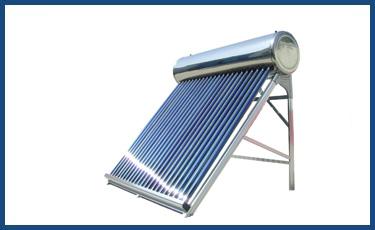
Solar water heaters are a cost-effective and energy-efficient way to heat water. They are designed to be used year-round, however, in the winter months, there may not be sufficient solar heat gain to deliver enough hot water. In that case, a gas or electric booster is used to heat the water.
There are several types of solar water heaters:
- Direct or open loop systems circulate potable water through the collectors. They are relatively cheap but offer little overheat protection, no freeze protection, and they accumulate scale in hard water areas.
- Indirect or closed-loop systems use a heat exchanger that separates the potable water from the fluid, known as the “heat transfer fluid” that circulates through the collector. These systems are a little more expensive but do offer freeze protection and typically overheat protection also.
- Passive systems rely on heat-driven convection or heat pipes to circulate water or heating fluid in the system. These are less expensive, but not as effective as active systems.
- Active Systems use one or more pumps to circulate water and/or heating fluid in the system. It can be placed in an air-conditioned space which reduces heat loss They are highly efficient and you can have much more control over the system with electronic controllers.
- Passive Direct Systems are either integrated collector/ batch heaters or convection heat storage unit systems. They use tanks that act as both storage and a solar collector. A convection heat storage unit system (CHS) has a separated tank and collector and the transfer between the two is driven by convection.
- Pressurized antifreeze or pressurized glycol systems use a mix of antifreeze and water mix for heat -transfer fluid in order to prevent freeze damage. Although these are effective at preventing freeze damage, antifreeze systems have many drawbacks that include possible damage to the solar loop’s components due to the acid and excessive heat, among others.
- The drain-back system is an indirect active system where the heat-transfer fluid (usually pure water) circulates through the collector, being driven by a pump. The collector piping is not pressurized and includes an open drainback reservoir that is contained in conditioned or semi-conditioned space. These systems require no maintenance other than the replacement of failed system components.
Contact us today at (281) 869-3955!
